Featured Articles
Rule Of Threes: The Basic Guide To Survival
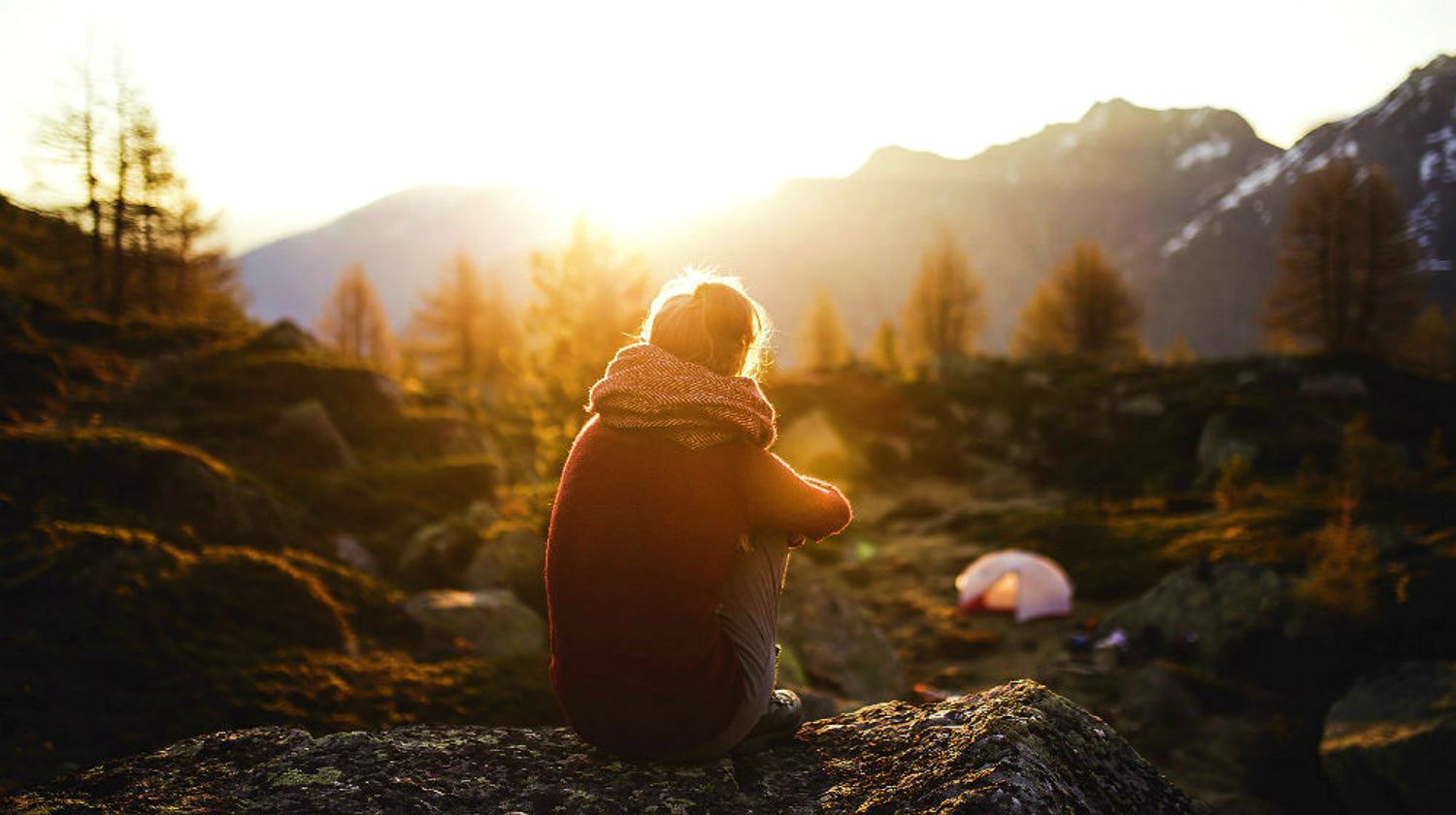
When push comes to shove, don't forget the rule of threes of survival!
RELATED: 8 Steps to Survive Anything
In this article:
- Three Minutes Without Air
- Three Hours Without Shelter
- Three Days Without Water
- Thirty Days Without Food
The Survival Rule of Threes to Learn Today
Click here to jump to the infographic.
Simply Stated
Remembering the rule of threes is what's going to separate you from the rest of the world when SHTF. In an extreme situation, a person cannot survive for more than:
- 3 minutes without air
- 3 hours without shelter
- 3 days without water
- 30 days without food
Note that this is not a guarantee. Take shelter, for instance.
If you fall into and stay in a large body of cold water, it is highly unlikely you will last three hours. If you end up on dry land and with nice weather, you may live for over three hours.
These rules are your guide when your experience is different from what you learn from the book. Mind you, both can vary significantly.
Given your set of skills and equipment, how do you make sure you survive for as long as you can?
Applying the Rule of Threes
Let's expand on this and consider three seconds. What can kill you in three seconds?
You die when someone shots you, for sure. But then, you may also meet your demise by simply falling over and cracking your skull.
You can also perish if a blunt object hits any part of your body.
In the first scenario, you may have to check your weapons and self-defense skills. How do you counter a gun attack?
In the second situation, your climbing knowledge or sense of balance will play a key. Lastly, in the third situation, your agility and alertness may help you survive.
All these may need your avoidance skills. How fast can you dodge a bullet or any type of attack?
Sometimes, these situations can occur in the darkness. Your skills may be useless if you don't have enough light sources such as a flashlight.
Three Minutes Without Air
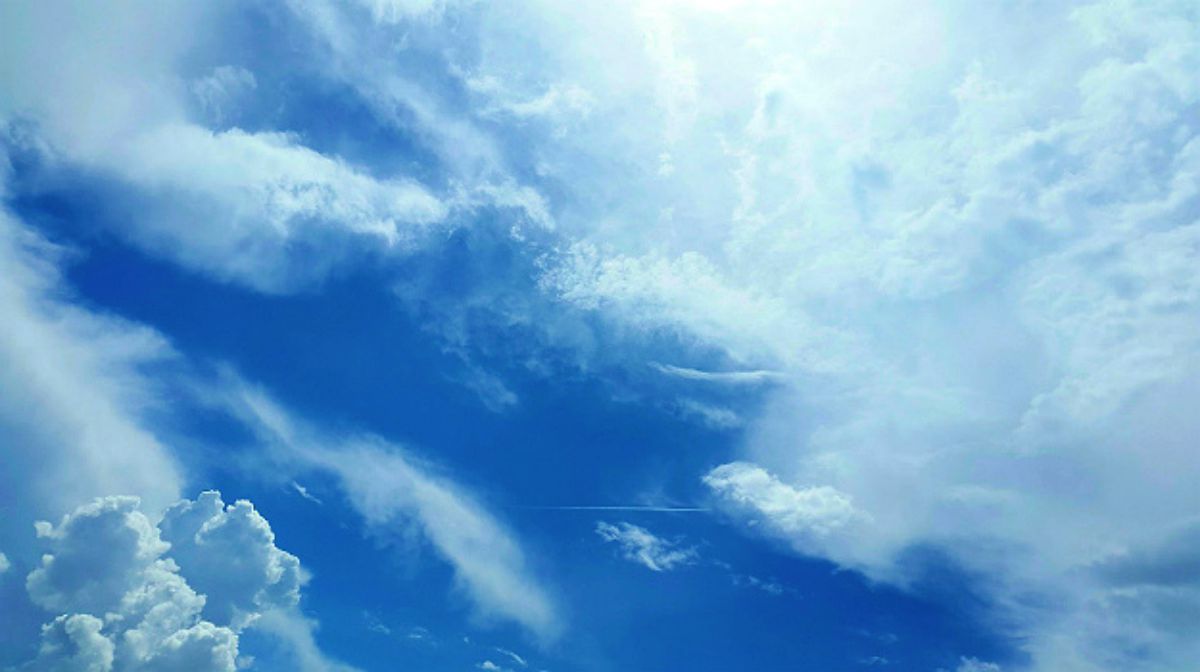
Three minutes without air is definitely a problem, but there is not a lot one can do about that. If you KNOW you are going to be in a place without air, then perhaps you can include having tanks of air on your to-do list.
But this is not practical just “in case.” No, about all you can do is have a filtration mask to filter out “bad” stuff in any air which does exist.
This might be a full CBRN mask, all the way down to a wet bandana, depending on likely circumstances, weight, space, and even budget.
- Removes Bacteria & Parasites: The Microfiltration Membrane Removes 99.999999% Of Waterborne Bacteria...
- Removes Microplastics: Removes The Smallest Microplastics Found In The Environment (Down To 1...
- Rigorous Testing: All Claims Are Verified With Laboratories Using Standard Testing Protocols Set By...
Three minutes with severe bleeding is also a problem, and there are practical options for this. It includes various types of tourniquets and combat bandages. Although this is not considered as one of those in-demand skills.
What is a tourniquet? It's a tool used to stop the blood flow through the veins by compressing the limb with a bandage or cord.
Three Hours Without Shelter
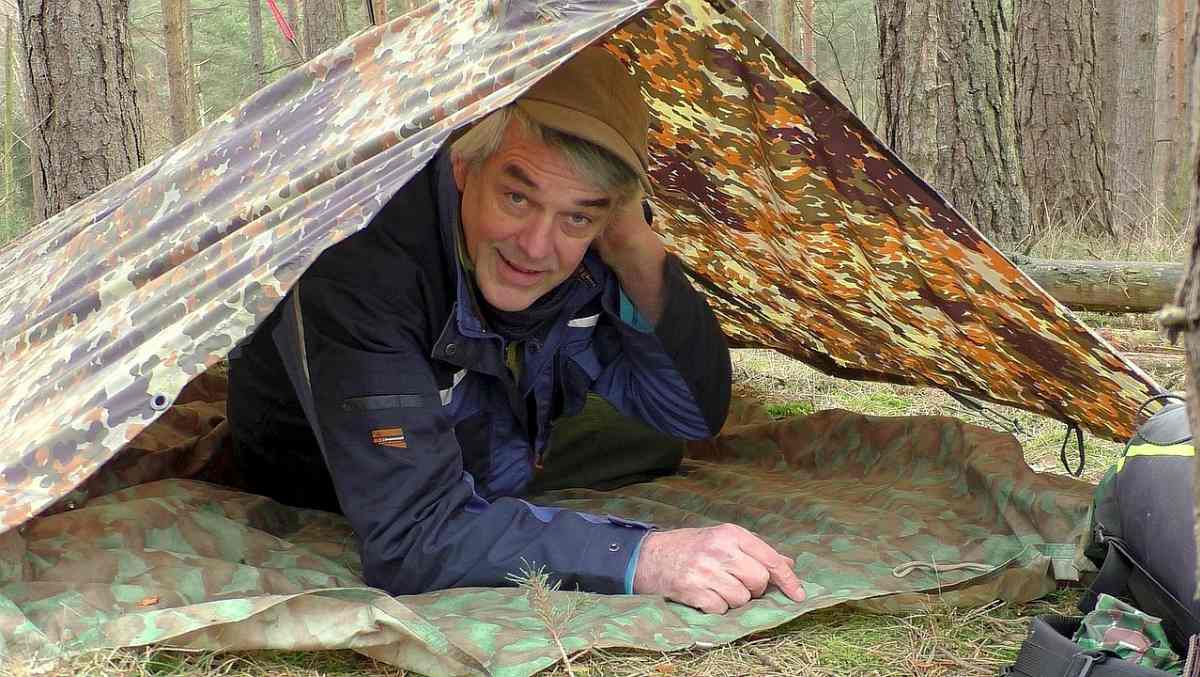
A shelter is a difficult subject that requires more in-depth discussion. First of all, a really good shelter is not portable.
Then a decent shelter (a good tent, insulating pad, and sleeping bag), while portable, tends to be larger and heavier than other equipment. But, it is often possible to make a shelter using the material at hand.
This may be a long process, though. In some circumstances, it may not be practical within the time limits as well.
Thus, the rule of thumb is having materials and tools to assist in building a shelter is usually wise. Consider what “shelter” really entails, too.
Basically, it is that the human body can only last in an environment that is significantly outside its “normal” range. “Exposure” is perhaps the leading cause of death for those lost or trapped “in the wild.”
If the body gets “too cold” or “too hot” long enough, it will shut down or at least result in serious injury. Thus, “shelter” requires materials and skills to keep the body dry when it is wet, warm when it is cold and/or cool when it is hot.
Keep in mind that the temperature of a large object (ground or body of water) with which the body is in contact is at least as dangerous as the temperature of the air. So any consideration of shelter must include insulation from the ground.
Fire can be a key component of “shelter” as well as many other survival aspects. That is why having fire making equipment and skills is critical.
RELATED: 20 Global Catastrophes To Prepare For NOW
Three Days Without Water
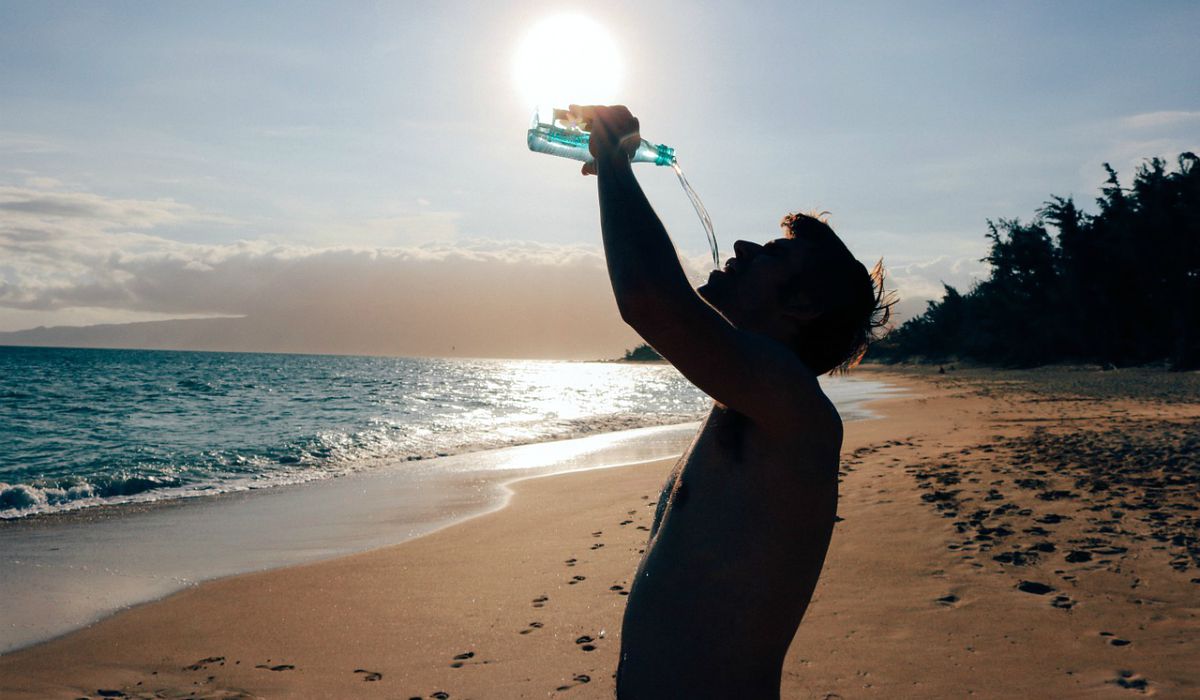
Water is pretty straightforward. Although it is possible to live for three days without it, this should not go on.
It will be very unpleasant and may cause long-term damage. It also reduces your ability to think and act in support of other survival aspects.
To avoid this, you can have water stored and/or have ways of getting, carrying, and using the water you find. It is also wise to always assume that water may have contaminated particulates present.
Therefore, also consider the skills and equipment necessary to “purify” these problems. Not to mention, the skills to “find” water that may not be readily visible.
- 🔥 Survival Spark Kit: In the wilderness, having reliable survival gear that ensure survival...
- ✨ Swift Fire Ignition: Crafted from durable magnesium, our ferro rods for fire making is paired...
- 🔥 Thousands of Sparks: Our fire starter tool boasts the remarkable capability of generating...
Three days with serious illness could be a problem as well, so consider ways of preventing and curing infections, as well as other dangerous diseases.
Thirty Days Without Food
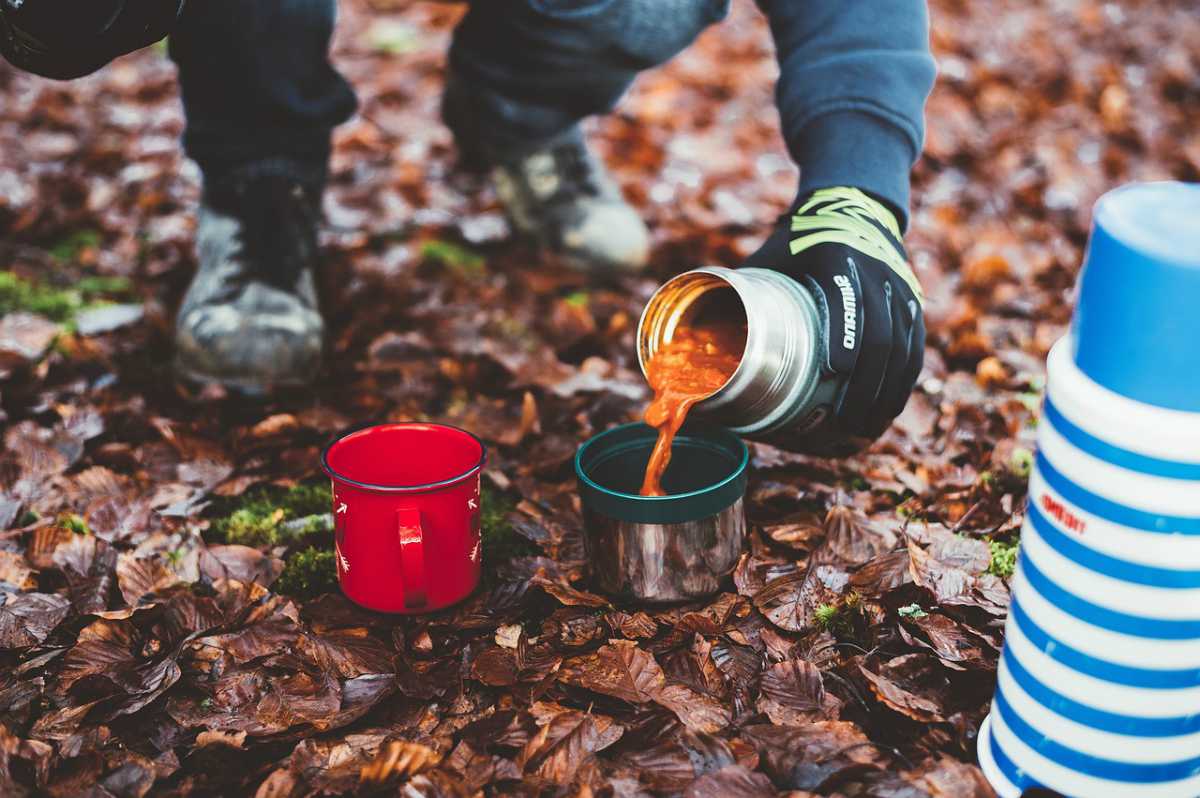
Food then would be the lowest priority, but not ignored. Like with water, going without food for significant periods of time is not only unpleasant but reduces your ability to think and act. It can eventually result in long-term damage as well.
Again, you can have food stored and/or have the skills and equipment to get food from the environment around you. Keep in mind though, that all “food” is not created equal.
Be aware that filling your belly may be ok short-term but should not be your long-term goal. You want to have food that has the stuff your body needs (vitamins, minerals, protein) and as little “harmful” stuff as practical.
Something to keep a particular eye on is “calories.” If you look for storage food, you may find places that brag on the number of “servings” they offer.
Do the math. If the calories per day are under 800, then you are looking at a diet that is usually only appropriate for an extreme weight loss regimen which is doctor monitored.
This would not be appropriate for long-term survival. Usually, the recommendation for a minimal survival diet is 1200 calories per day, and if you will be active, 2000 calories per day may not be too much.
Another Application of the Rule of Threes
As we see, the “Rule of Threes” provides guidance on selecting which skills and equipment you might need. It also is a key factor in deciding your ACCESS to the equipment.
If you have the defensive equipment, it needs to be immediately available. In a holster or sheath or pouch on your person is just barely adequate.
I suspect if someone was to attack you, the odds are pretty low that you could talk them into waiting while you dig out your defenses from the bottom of your pack. Similarly, your air filtration and severe bleeding equipment should be easily and reliably available in under a minute.
This means in an external pocket(s) or pouch(s), probably with nothing else in there. They should also be secured but accessible because you don't want to lose the items in the process.
A light source should also be readily available, and reliably accessible in total darkness. After this, access becomes less critical.
Fire equipment should be fairly accessible, and perhaps some of the shelter supplies. Everything else can be packed where it best fits, within reason.
Things Which Are Not “Critical” Can Still Be Important
When considering long-term survival, remember that there are a number of things which although not a matter of “life or death,” make survival easier. Or, at least more pleasant and reduce the long-term impacts of the emergency.
Toilet paper and toothbrushes are things which first leaped to my mind but I'm sure there are things which occur to you.
- Made in USA *** CAMPING FIRE STARTER: Naturally insulated to burn directly on top of water, sleet,...
- NO HARMFUL CHEMICALS Unlike cubes or fuel-based lighters, this lighter is made from recycled wood,...
- NON-VOLATILE, SAFE STORAGE AND TRANSPORT No risk of unexpected fires or flare-ups. Stores safely...
Bottom Line
Note that the “Rule of Threes” is a guide to PRIORITY, not IMPORTANCE. For instance, if you don't have food, you will die just as surely as if you don't have air.
Both are equally important to stay alive. The first one deals with an immediate problem while the other deals with a longer-term problem.
When you are evaluating the gaps in your skills and materials, look at your needs in priority order, but do look at ALL of your needs.
Consider the amount of space available and your budget, and use this to figure out a realistic survival timeframe. Then, try to “match” the amounts of any supplies.
It might not be useful to have a year's supply of food and a month's supply of water, or a year's supply of water and a month's supply of food. Unless you knew that you could replenish whatever it was you only had a month's worth of.
- Quick Prep! Just add water to the pouch and you're good to go in less than 10 minutes, with no...
- 30 Servings
- Allergens: Egg, Milk, Soy, Wheat, Coconut
Here’s an infographic guide. Don’t forget to download, save, or share this handy infographic for reference:
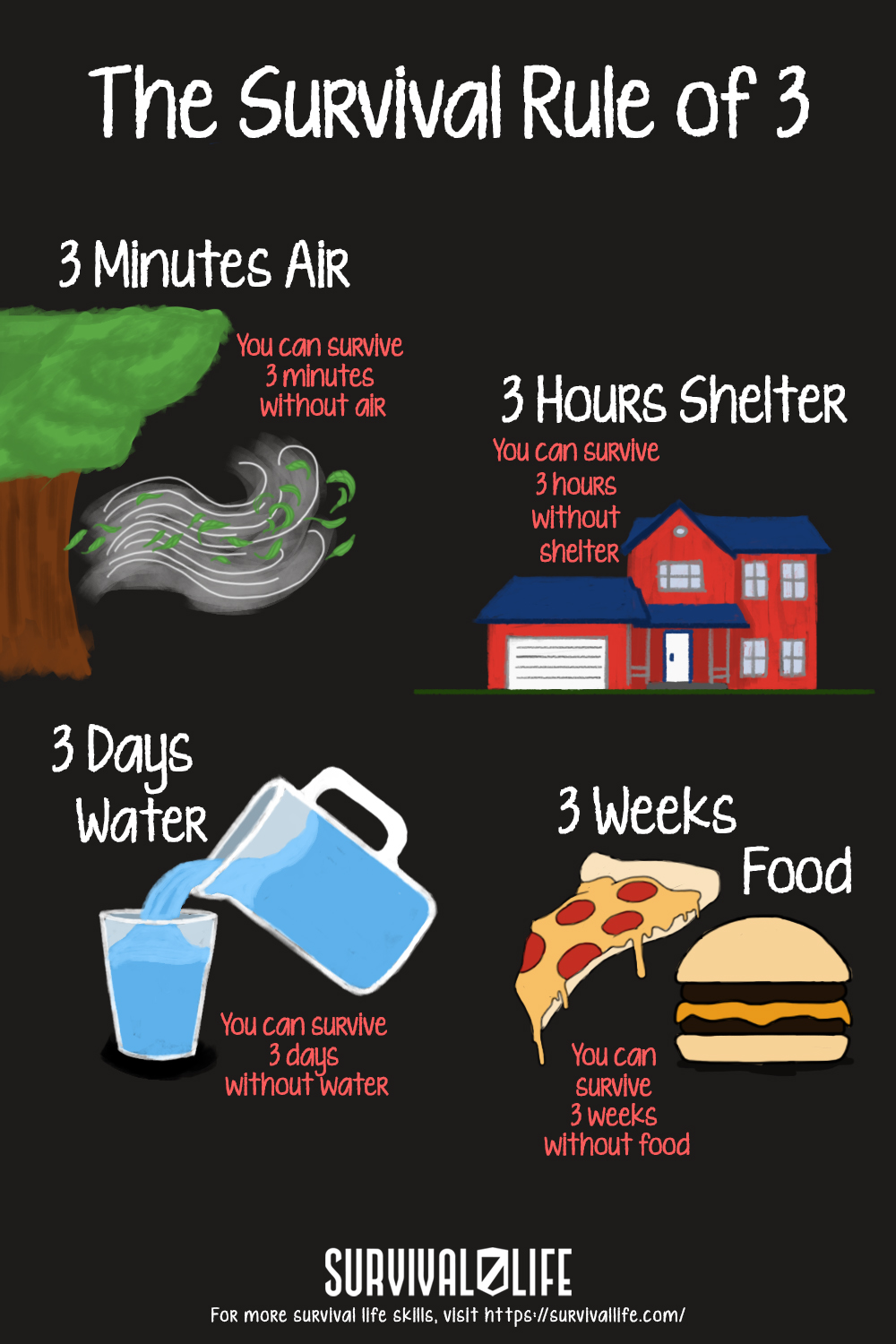
Watch this video from Andy Froy's Bushcraft & Survival Guides to learn more about the survival Rule of Threes:
We need not stress enough how knowledge and preparedness are keys to survival. In fact, tidbits of info like the rule of threes may mean the difference between survival and demise for you.
With that, arm yourself with this know-how and try to use it every day so you are always ready, come what may.
What do you think of the rule of three survival guide? Let us know your thoughts about it in the comments section below!
Up Next:
For awesome survival gear, you can’t make at home, check out the Survival Life Store!
Follow us on Facebook, Instagram, Twitter, and Pinterest!
Last update on 2024-11-16 / Affiliate links / Images from Amazon Product Advertising API
-

 Paracord Projects1 year ago
Paracord Projects1 year agoParacord Projects | 36 Cool Paracord Ideas For Your Paracord Survival Projects
-

 Paracord Projects1 year ago
Paracord Projects1 year agoHow To Make Paracord Survival Bracelets | DIY Survival Prepping
-

 Medical Care1 year ago
Medical Care1 year ago21 Home Remedies For Toothache Pain Relief
-

 Knife Laws1 year ago
Knife Laws1 year agoAre Switchblades Legal? Knife Laws By State
-

 Do It Yourself1 year ago
Do It Yourself1 year agoSurvival DIY: How To Melt Aluminum Cans For Casting



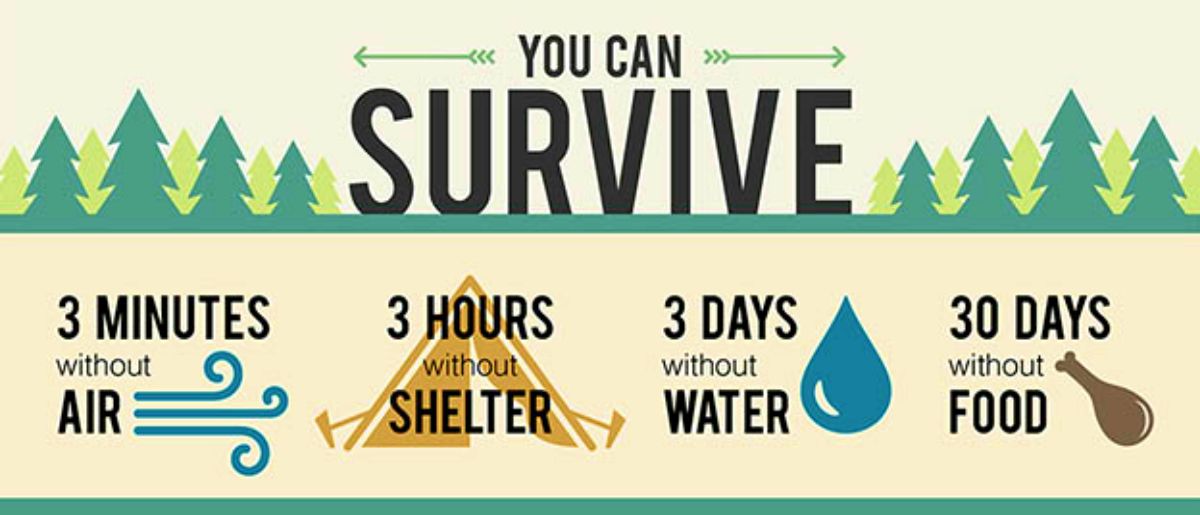



Pingback: The Survival Rule of Threes | Patriot Powered News
Pingback: The Survival Rule of Threes » Survival Gear & Food Storage
Willie R. Gillis
June 17, 2015 at 5:22 AM
<-+++++++ My buddy's sister makes $78 an hour on the internet . She has been unemployed for seven months but last month her pay check was $19423 just working on the internet for a few hours. Visit Website. She actually started four months ago and pretty much immediately began to make more than $715… Every week. Find out here n0w –
>/
don au
January 23, 2018 at 5:40 PM
I’d like to learn how your sister did this Willie.
Pingback: 13 Top Survival Skills | Learn Now, Survive Later - Survival Life
Pingback: 12 Tools You Need to Survive | Survival Life
Pingback: The Limits of the Human Body | Survival Life
Thor Sparre
January 21, 2018 at 2:29 PM
You forgot “Loss of Hope” at “3” months. Actually loss of hope can reduce the survival times of all those that came before it because you need that never give up drive within you to provide the drive to survive.
Fred Fawcett
January 21, 2018 at 4:23 PM
The one place you might not want to be turning on that flashlight is if you’re trying to avoid a weapon in the dark.
Dan Colley
January 21, 2018 at 7:46 PM
No doubt, Fred. The odds are that no matter where you are, there will be SOMEONE out there that wants what you have set aside to survive. Their survival plan is to rob, steal and kill to survive. Many of them are just looking for a glint of light at night. If you are using a flashlight (or any light source), be as certain as you can of your surroundings. Shield the light if possible. Use the smallest and dimmest light source that you can.
Thor Sparre
January 21, 2018 at 8:11 PM
Your right on target and don’t forget smell [cooking] and sound [generator]. the first three weeks, after a major event [CONUS]. Local & regional events shouldn’t be a problem because the rule of law will be in effect but once you lose the rule of law and the hard infrastructure, it’s going to be crazy.
Dick Morrison
January 21, 2018 at 8:16 PM
You forgot another 3 and that is 3 seconds if you do not have a firearm in your possession.
Caelo
January 21, 2018 at 9:01 PM
Or 3 seconds to remove yourself from immediate danger.
Bradley Bourn
January 22, 2018 at 12:16 PM
You should read Cody Lundin’s books because you forgot a time unit, “seconds”, ” You can die within 2 to 3 seconds if you panic.
Pingback: Rule Of Threes: The Basic Guide To Survival
Pingback: Rule Of Threes: The Basic Guide To Survival | Primitive technology
Pingback: Rule Of Threes: The Basic Guide To Survival - Survival Patch
Pingback: Stay Hydrated | How To Stay Hydrated While Hiking [ Video] | Survival Life
Pingback: Survival Food 101: 9 Survival Foods That Will Outlast The Apocalypse
Pingback: How To Stay Hydrated While Hiking [Video] – Ultimate Survival Alerts
Pingback: How To Stay Hydrated While Hiking [Video] - Automotive Questions Information Answers
Pingback: 6 Prepping Tips For The Mobility Challenged - Firearm Pebbles